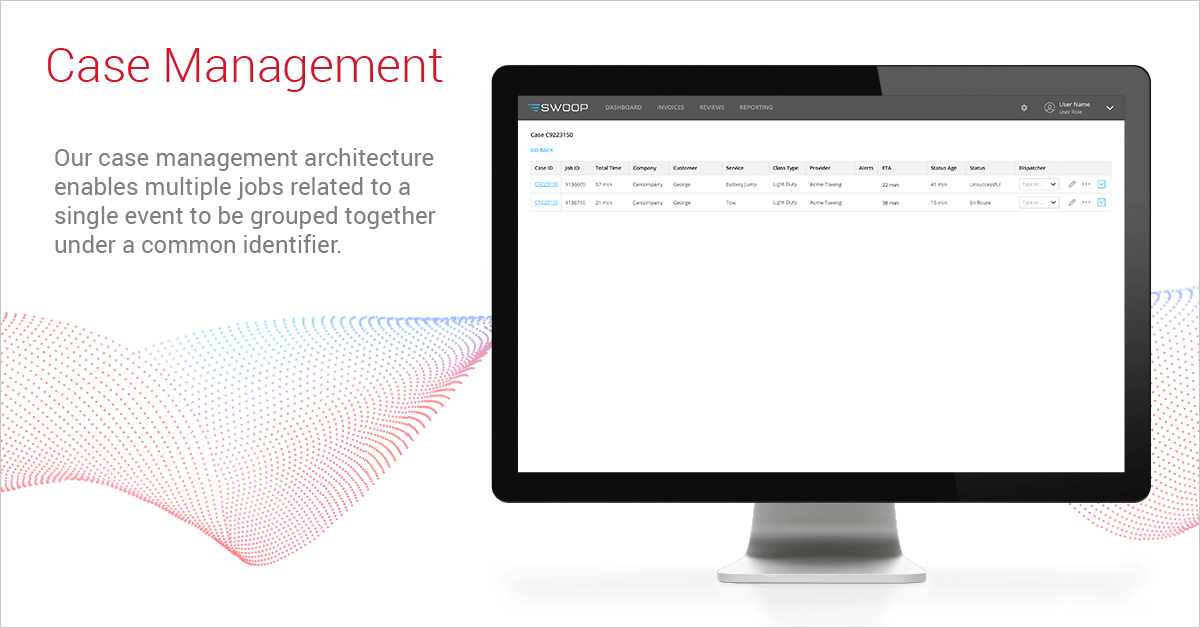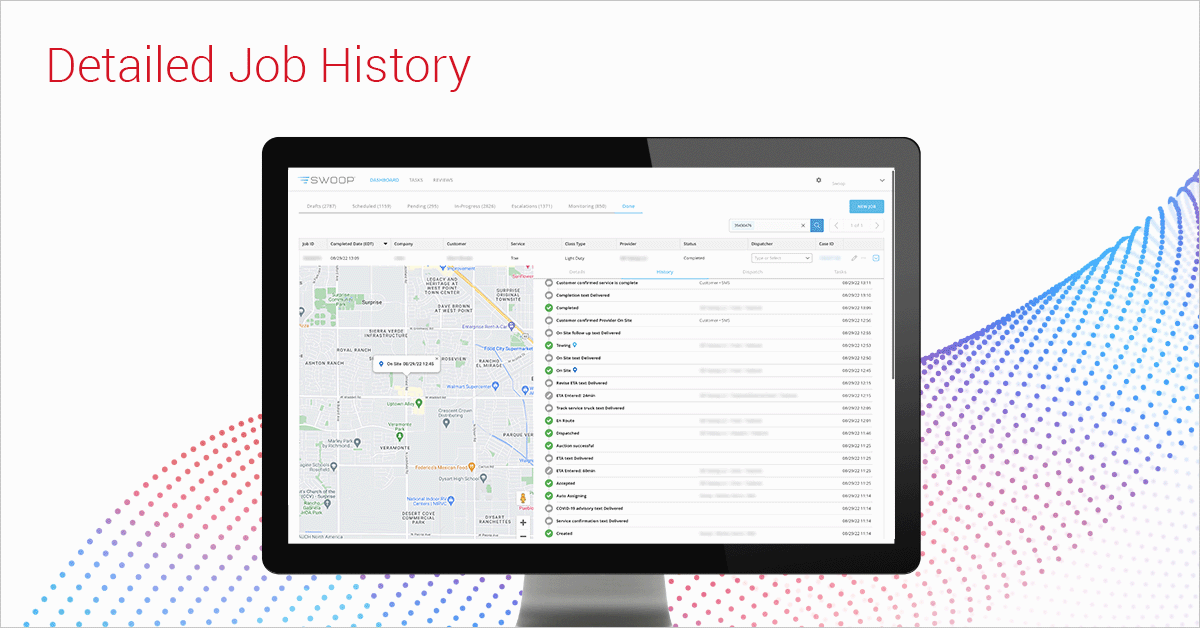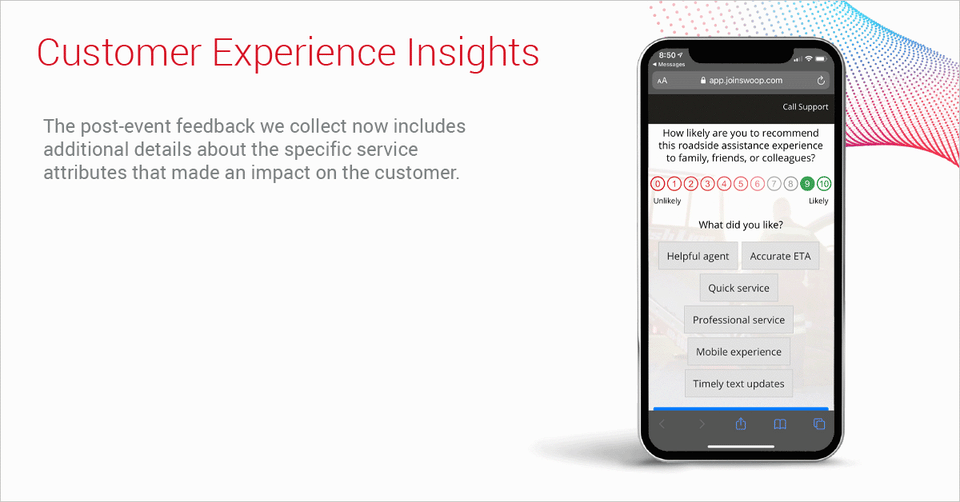As an industry leader, we recognize that transparency is essential to just about everything we do. For clients and partners, transparency on the service we provide is how we earn and maintain trust. It’s what enables our agents and service providers to understand customers’ needs so we can efficiently and effectively resolve tens of thousands of roadside events every day. It also helps our team break down silos to keep our operations, product, and client success teams in lock step and focused on the things that really matter.
With so much hinging on our ability to see, evaluate, and communicate what’s happening in real time at the macro and micro levels, it’s no wonder that we’re continuously investing in new product and platform enhancements that help improve transparency.
Case Management: A Holistic View of the Customer
A full understanding of customer pain points requires a holistic view of the customer experience. This is why we’re updating our platform architecture to support a case view that links together multiple jobs.
Let’s say a customer requests roadside because of a dead car battery – an issue that can often be solved with a jump start. A roadside service provider accepts the job and heads to the location only to discover on arrival that a jump start or even new battery won’t do the trick; the customer needs a tow. This may mean a new dispatch is needed.
When our Case Management architecture is live, later this year, the new dispatch will be grouped alongside the initial job, sharing a unique case identifier. As a result, any Agero agent or client customer success manager who is monitoring real-time activity will have clear visibility into the end-to-end customer experience. They’ll have the info they need to jump right into action, communicating with the customer and prioritizing resources as needed to expedite a resolution. There will also be a clear linked record of each of the various jobs related to this case in reporting and dashboards.

By nesting jobs within cases, we’re improving the transparency of our services in two key ways: helping providers and agents to better assist customers, and improving the visibility of these incidents in our reporting.
And perhaps best of all, this architecture enhances the scalability of our platform, opening up exciting opportunities for us to add new functionality that can support high value use cases across the automotive ecosystem. For example, this will further support integrated programs for our International clients, where motor clubs often need to manage trip interruption services like overnight accommodations and a rental car, in addition to roadside assistance. In those instances, each service will be linked underneath the same case.

We continue to expand the functionality of our history tab in Swoop. This view includes a full time stamped history for every job status. Events are listed in descending order so that most recent events appear first. to make it easier to understand your customer's experience. In more complex jobs, agents may work with a provider to modify a job status after the fact. When this occurs, the original status will remain in the history with a gray strikeout and a new status will be added. We've also added provider GPS to this history and this is shown where available with a blue location symbol next to the status. This creates a detailed audit history and allows for even greater transparency.
Real Transparency Means Knowing Not Just What, But Why
Having clarity about what's happening within each roadside event is critical. Just as important, though, is understanding why those things are happening.
Deeper Customer Feedback Insights
We recently expanded our customer feedback platform so that in addition to capturing the Net Promoter Score for roadside events, we’re also gathering qualitative data about the customer experience. We’ve added quick and easy follow-up questions to help us learn which attributes of the service are resonating with our customers and which are not. Much of the feedback we are receiving confirms what we already know – for instance, that customers love the ease of requesting service online or through an app, or that they are more bothered by missed ETAs than long service arrival times. Still, this hard data helps us prioritize our innovation efforts on the pieces that matter the most, that will have the biggest impact for clients and customers.

Transparency Leads to Better Performance
The bottom line is that the sharper our understanding of what impacts the customer experience and service execution of each and every event we manage, the better we can serve our customers. Increasing transparency and using these data-driven insights not only adds more value to clients, but also helps us keep pushing the envelope for the automotive industry to meet changing customer expectations and deliver increasingly frictionless service.
This innovation is what helps us ensure that we are prepared to help drivers can get back to enjoying the ride, quickly and efficiently, no matter what bumps in the road come their way.





 Patrick Davis is a Senior Director of Product for Agero, where he leads the Swoop product strategy and manages the product roadmap and its execution. The first product hire on the Swoop platform back in 2017, Patrick has deep experience as a product leader in fast-paced environments. He is driven by the opportunity to improve non-digital life with digital products. Patrick has a BS in Product Design from Stanford University, and moonlights as a surf bum and amateur philosopher.
Patrick Davis is a Senior Director of Product for Agero, where he leads the Swoop product strategy and manages the product roadmap and its execution. The first product hire on the Swoop platform back in 2017, Patrick has deep experience as a product leader in fast-paced environments. He is driven by the opportunity to improve non-digital life with digital products. Patrick has a BS in Product Design from Stanford University, and moonlights as a surf bum and amateur philosopher.